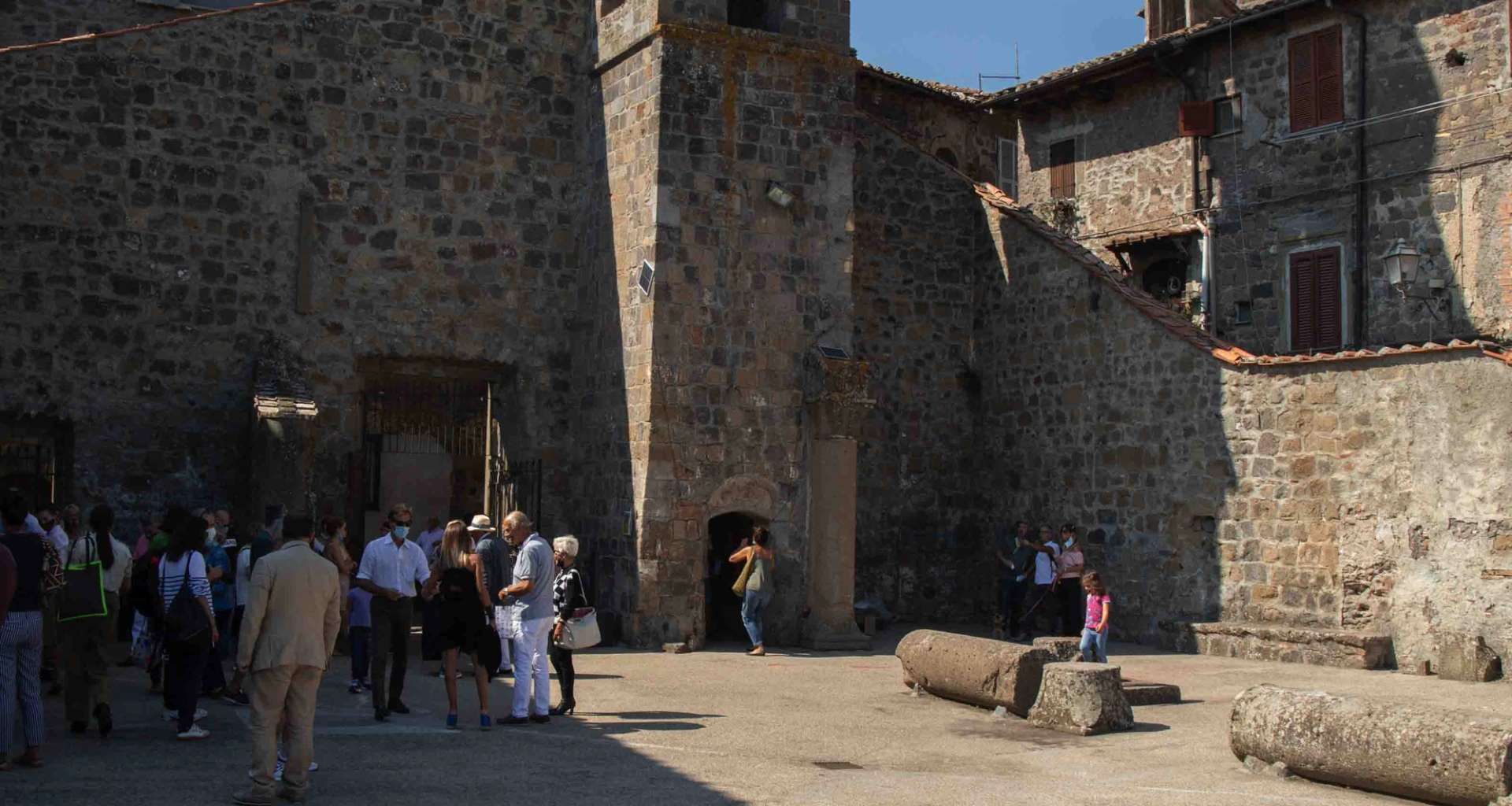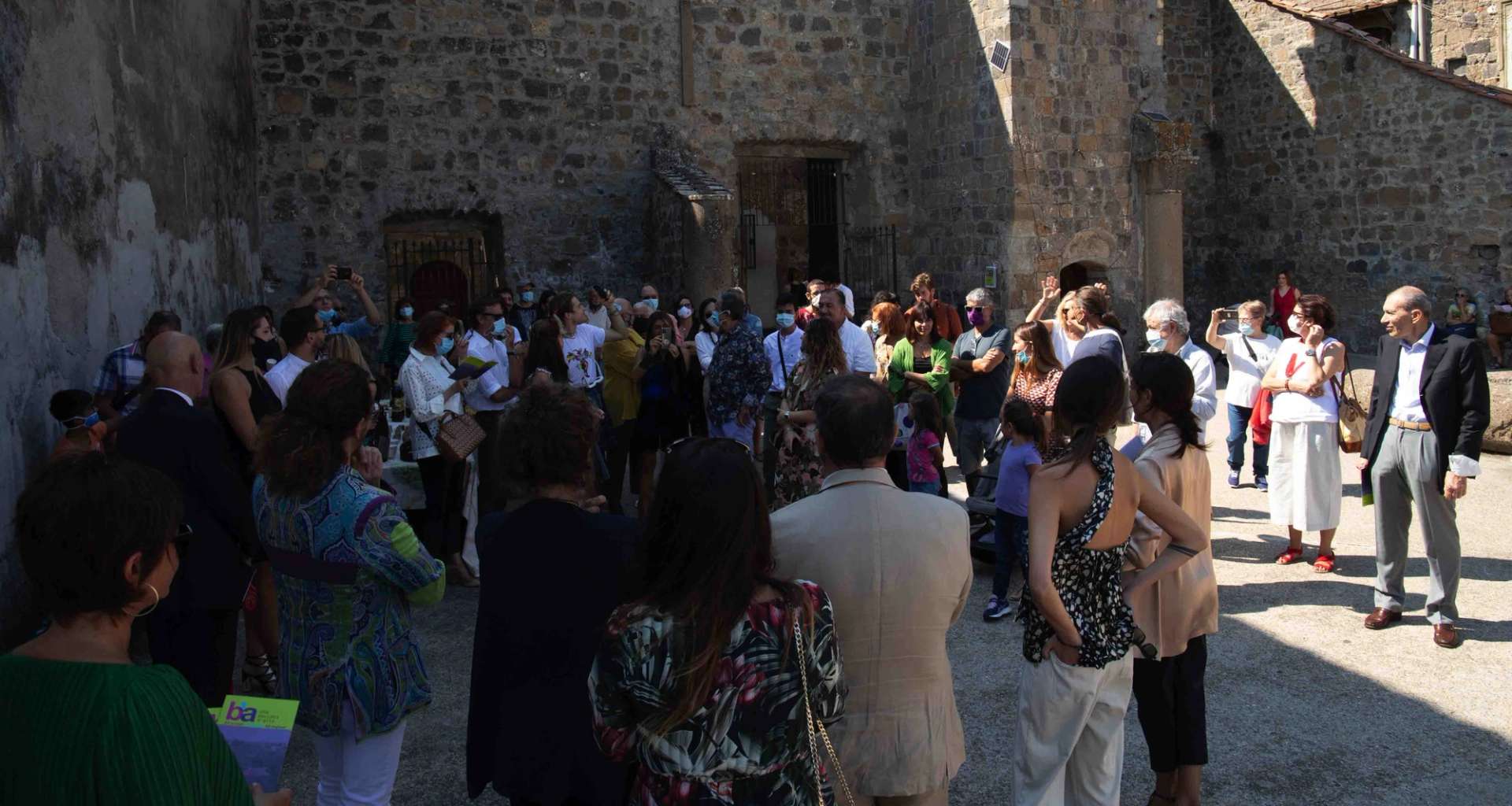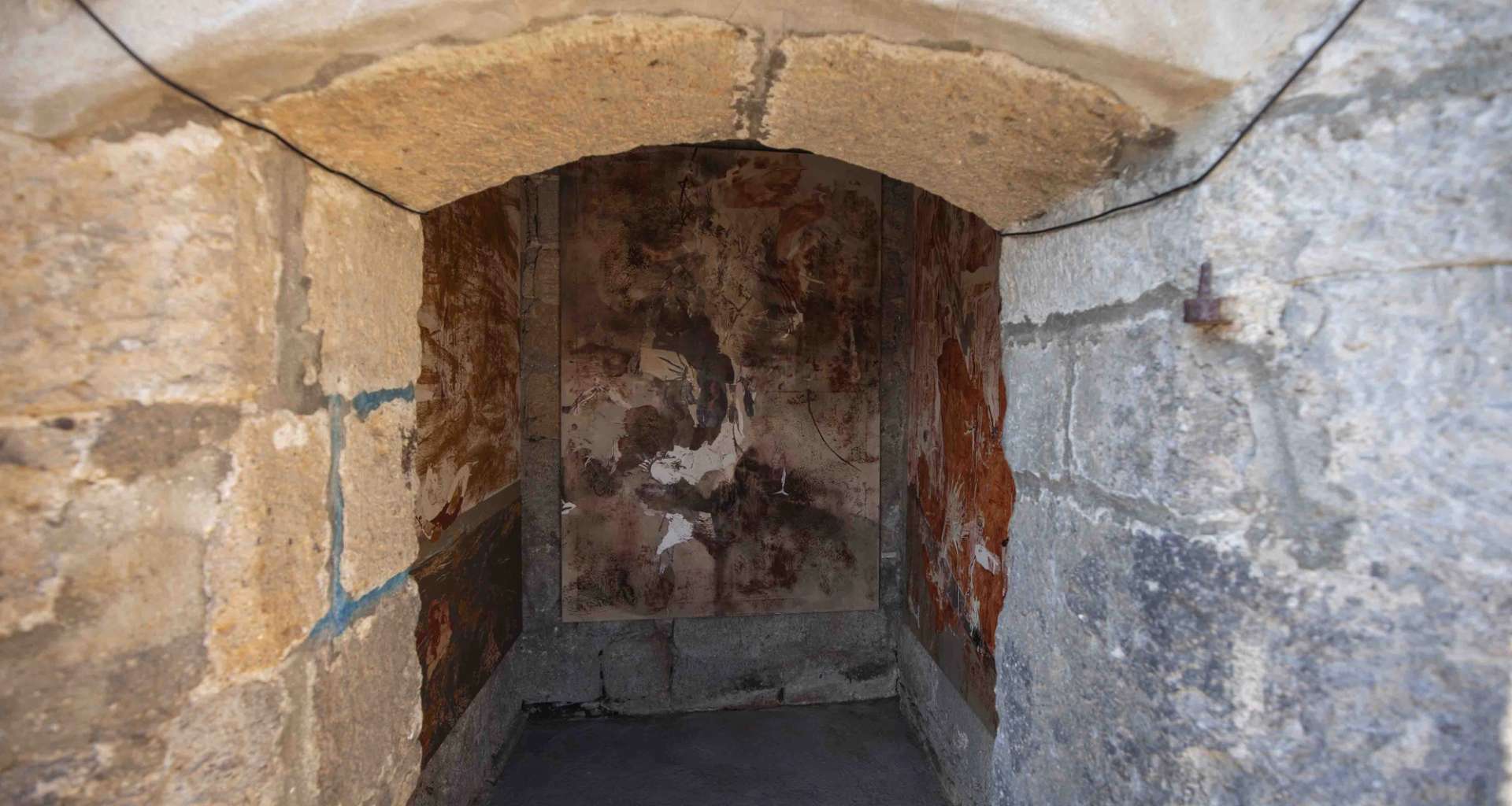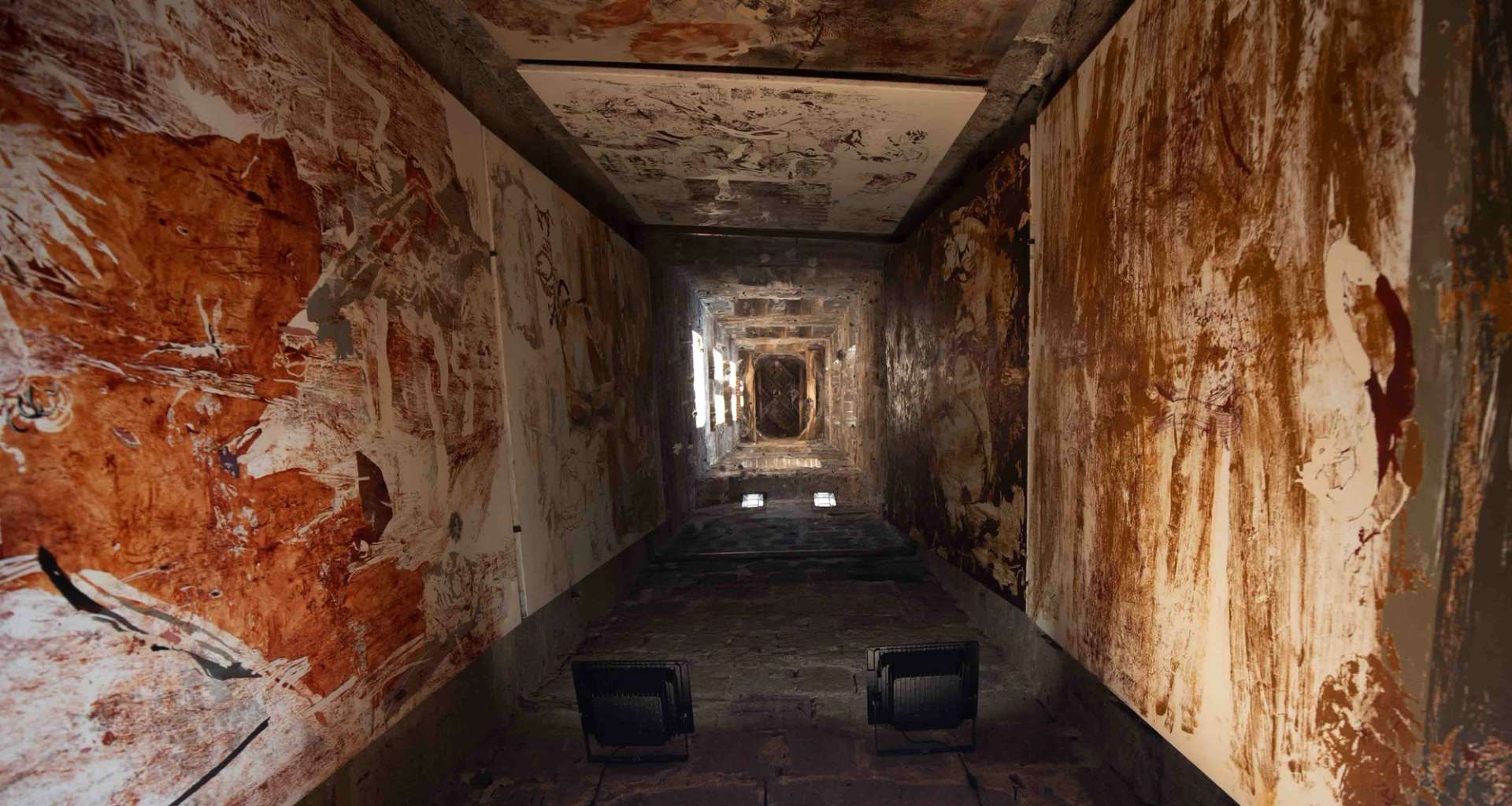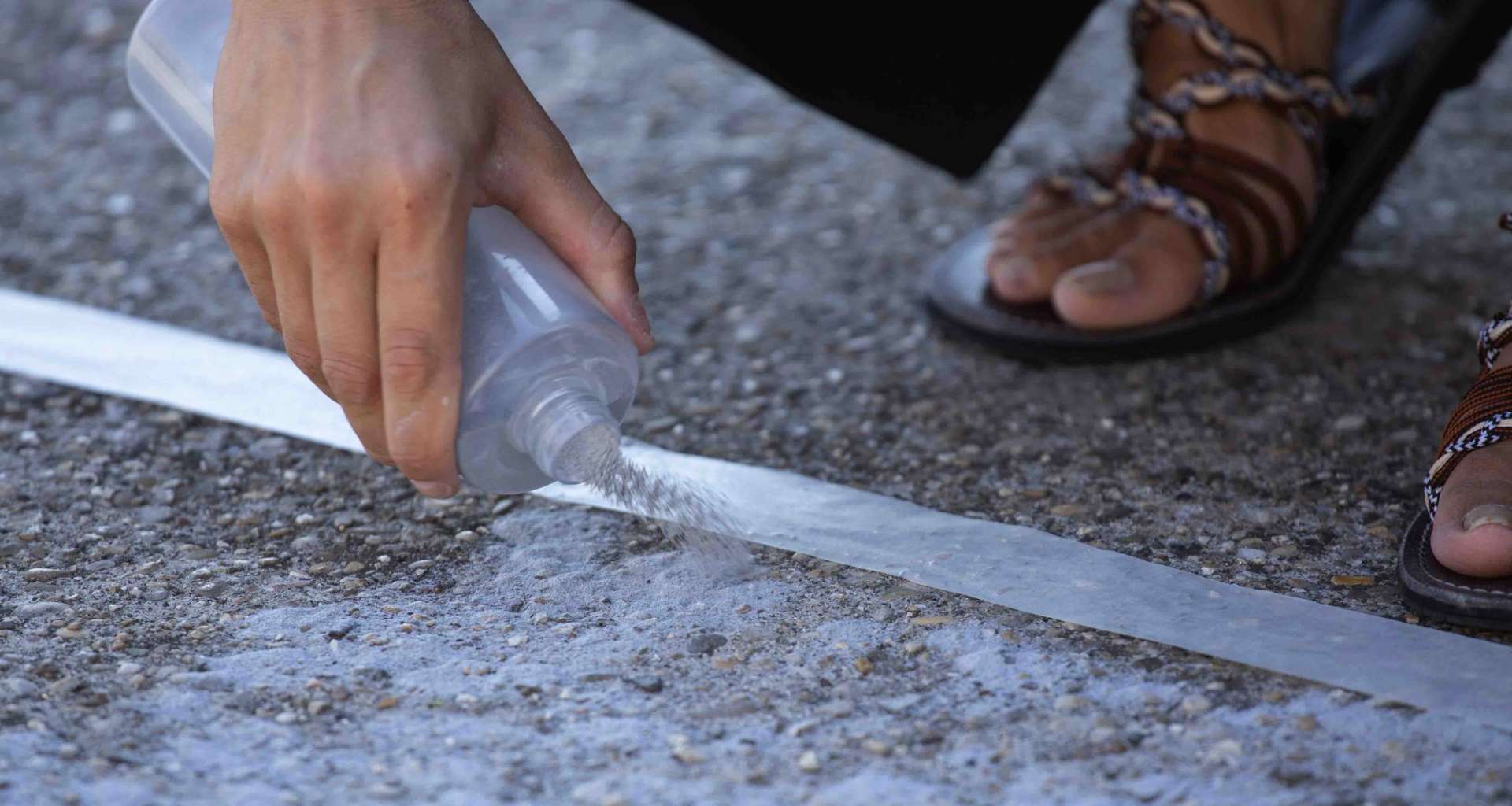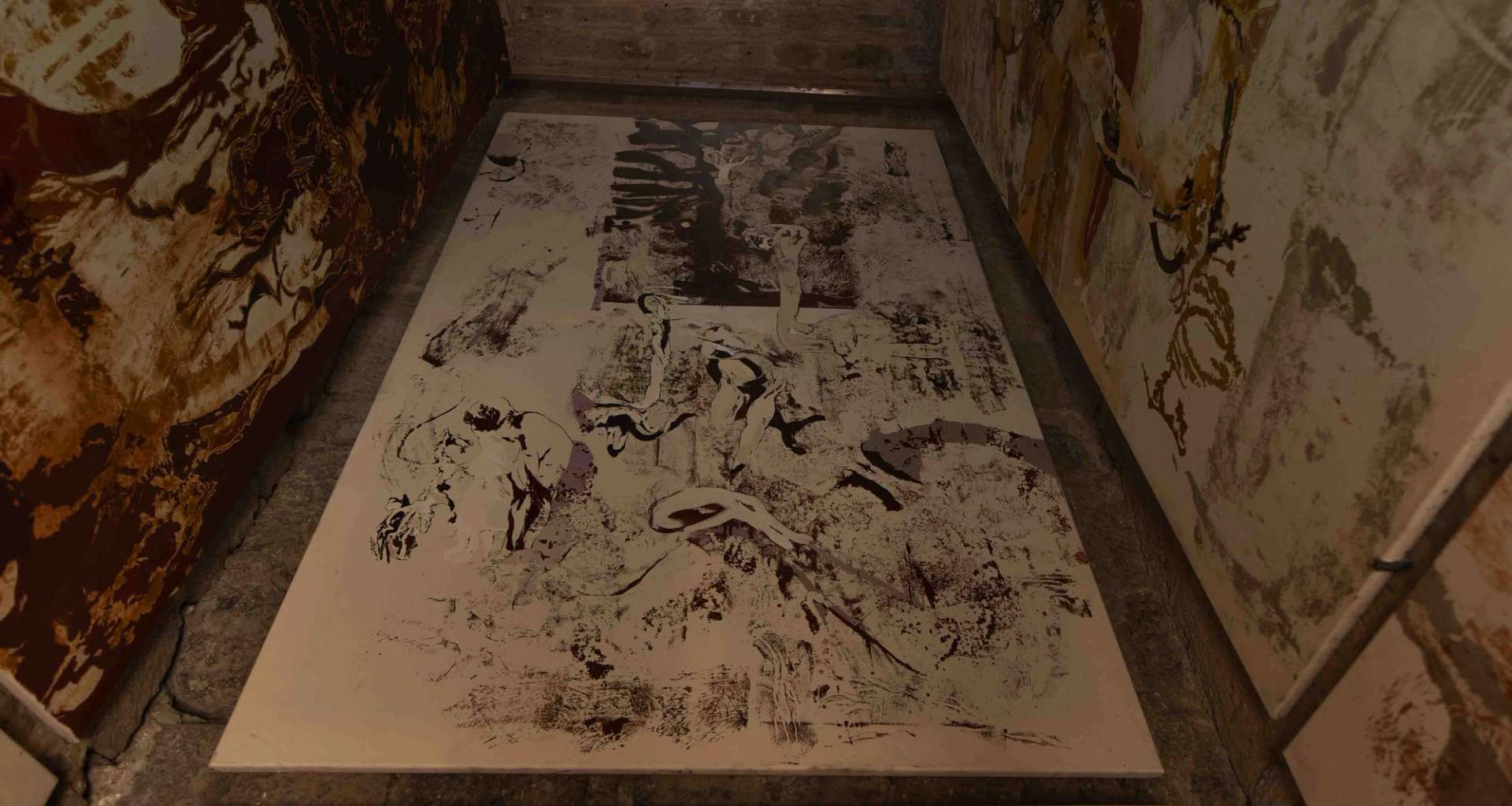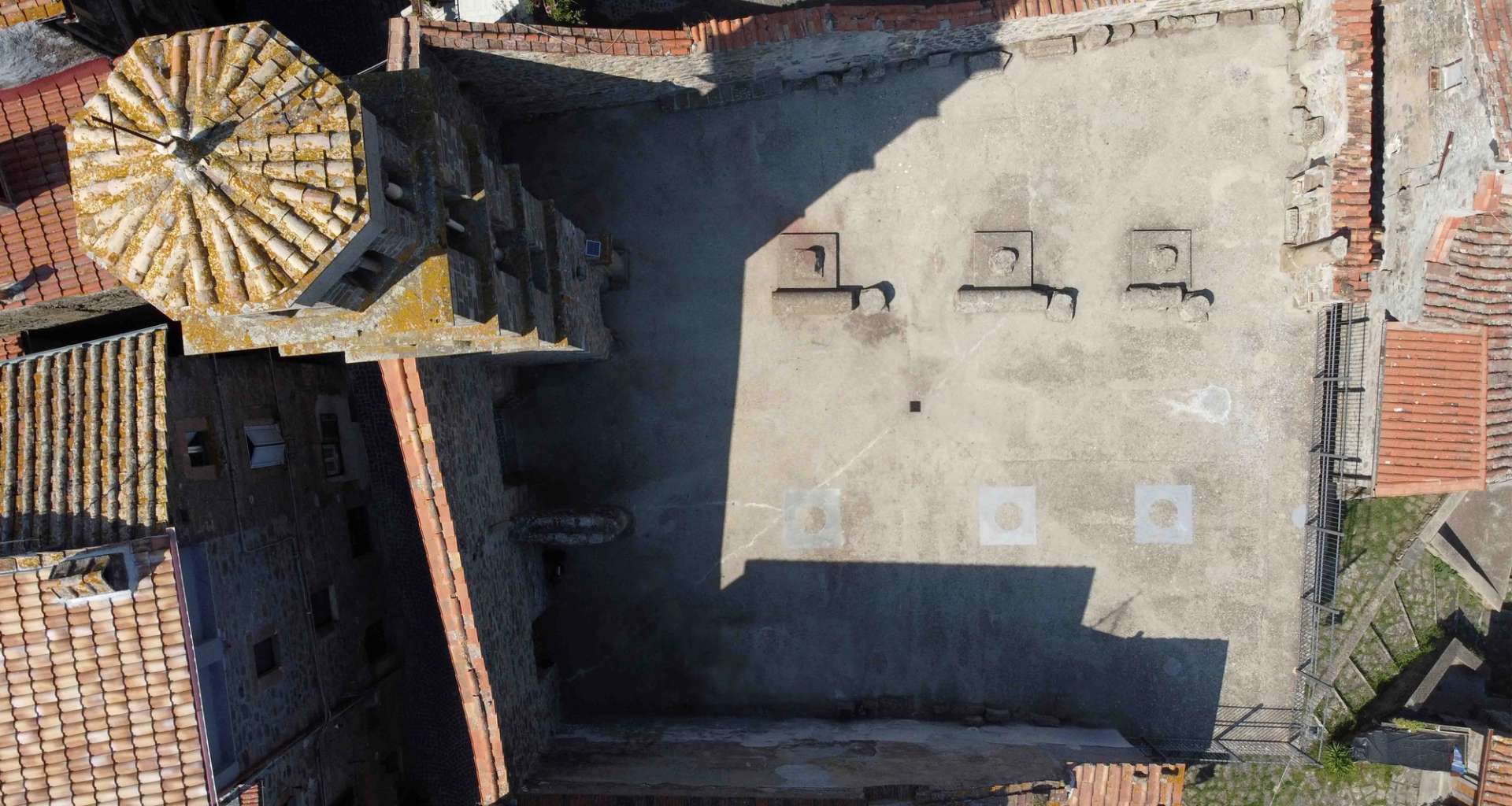Marta Spagnoli engages with the village of Ronciglione by creating a series of large canvases that cover the internal walls of the silent bell tower of Sant’Andrea. Her palette for these site-specific works is composed only of pigments deriving from iron, a characteristic element of the village, and the inevitable color that characterizes her paintings: white. In these paintings, the interventions carried out with white try to cover the traces of a time that has elapsed and is still in the making. During the inauguration, in front of the bell tower, Marta Spagnoli gives life to an ephemeral drawing in the open air through a live performance. The artist draws the perimeter of the disappeared church of Sant’Andrea with iron dust, bringing people back to a past time, to a collective memory ready to vanish at the first breath of wind. The particular history of the village of Ronciglione – with its deconsecrated churches, the now abandoned paper mills, the ironworks and the iron and steel activities now in disuse – sparked great interest in the artist, whose installation aims to deepen the history that lies behind the art, architecture and buildings of the area.
"FELICIA MUNERA" ARE THE BEAUTIES WITH WHICH RONCIGLIONE WAS ENDOWED BY FATE, BUT MUNUS ALSO MEANS COMMITMENT, ASSIGNMENT, WORK. I WANT TO REVEAL PLACES SUCH AS THE BELL TOWER, THE CHURCH AND THE ELEMENT OF IRON AS RESTITUTIONS, GIFTS FOR THOSE WHO COME INTO CONTACT WITH THEM AND DETECT THEM AS SUCH, WITH THE SAME JOY AS AN ARCHEOLOGICAL DISCOVERY. THE SIX CANVASES EVOKE THE TRAVEL EXPERIENCE, THE STRONG PERCEPTION OF GAPS AND ABSENCES TO WHICH TO VALUE IS GIVEN
Photographic documentation, scientific illustrations, representations of ancient, classical and contemporary poetic traditions are the visual methods the artist uses to explore the potential of structures, relationships, and meaning. Her main fields of interest are organic, animal and plant forms, as well as man in its mythical dimension. The hydra, floating lovers, satyrs, horses, felines, wayfarers and snakes that populate Marta Spagnoli’s (Verona, 1994) paintings are suspended or intertwined like discoveries that have gradually emerged from our memories.
A SERIES OF LARGE CANVASES THAT COVER THE INTERNAL WALLS OF THE SILENT BELL TOWER OF SANT’ANDREA. HER PALETTE FOR THESE SITE-SPECIFIC WORKS IS COMPOSED ONLY OF PIGMENTS DERIVING FROM IRON, A CHARACTERISTIC ELEMENT OF THE VILLAGE, AND THE INEVITABLE COLOR THAT CHARACTERIZES HER PAINTINGS: WHITE
The village of Ronciglione, the medieval heart of the city, stands on the rounded massif of a characteristic tuff cliff. The village constitutes the ancient inhabited area of the city and is divided into two areas, both rich in monuments.
In the village above Ronciglione, one can admire the Castello della Rovere, known as “I Torrioni”, built in the Middle Ages by the Prefects of Vico to guard the only natural access to the city. In the village below there is Santa Maria della Provvidenza and the Historic House Museum of the Venerable Mariangela Virgili.

